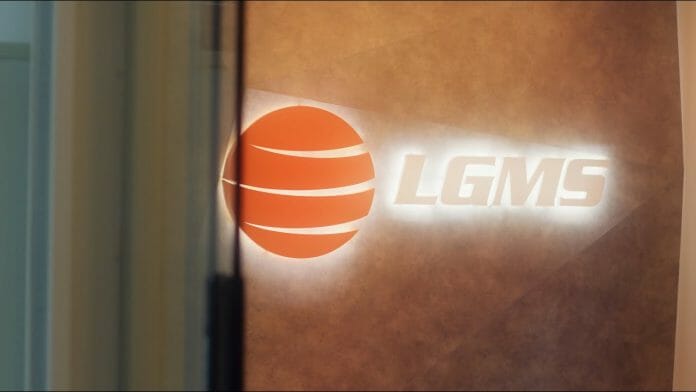World Semiconductor Trade Statistics changed its forecast for global semiconductor demand growth in 2023 to a contraction of 4.1% in end-Nov 2022 (from a 4.6% expansion forecast three months before), thus MIDF Research believes due to the prolonged supply-chain disruptions in China as well as a steeper inventory adjustment cycle.
Already, global chip demand slowed as Semiconductor Industry Association (SIA) reported its first YoY sales decline of 3% for the month of September since the boom in Feb 2020. Growth recorded by the US (+11.5%), Europe (+12.4%) and Japan (+5.6%) were offset by lower sales in China (-14.4%) and Asia Pacific (-7.7%). This also marks the third consecutive MoM decline for China’s semiconductor purchase — which makes up one third of global demand — owing to the Covid-related restrictions in the country. Not hopeful for a quick turnaround,
the World Semiconductor Trade Statistics (WSTS) also trimmed its forecast for 2022 and 2023 to 4.4% and – 4.1% (vs.13.6% and 4.6% previously), respectively.
Automotive sales over the past few months in China (Aug +44%, Sep +36%, Oct +17%) and Europe (Aug +4.4%, Sep +9.7%, Oct +12.2%) have been exhibiting growth. However, the research house’s channel checks suggest that there will be an increasing proportion of these sales being fulfilled by remaining inventory instead of new inventory replenishment. Automotive-centric players such as D&O have indicated that its seasonally stronger 4Q may not materialise as car manufacturers are prioritising clearing off existing built-up inventory and have toned down order forecast for the next two quarters in anticipation of heightened economic uncertainty.
Such sentiment has been echoed by the likes of JHM which is also involved in the automotive LED segment. This in turn pushes the automotive segment into the on-going inventory adjustment cycle which the smartphone and PC segments are already experiencing since early this year. As a saving grace, there isn’t any cancellation of orders for the automotive segment but deferment as the automotive players remain sanguine of their long-term prospects, especially for electric vehicles.
The recovery of global semiconductor demand will hinge on China, given its commanding market share. However, with no clear signs on how the country can fully extricate itself from the epidemic, supply chain challenges are expected to remain going into 2023.
As such, the US smartphone maker has also warned of longer-than-expected delivery time for its latest smartphone model in the upcoming festive season. This will likely dampen INARI’s growth given that around 60% of its revenue comes from the smartphone radio frequency (RF) segment. While INARI has switched its strategy to focus on more legacy models, it may still likely struggle against the waning consumer demand for premium purchases as 9MCY22 sales of the US smartphone brand has declined -2.2% YoY (vs. 9MCY22 global smartphone shipment of -14.0%).
MPI and UNISEM with significant presence in in China have also cautioned of the challenging operating environment. MPI’s Suzhou plant has seen utilisation rate fall from >90% two quarters ago to c.40% (vs. 70% break-even level) in its recent quarter owing to supply chain disruption, higher cost incurred to adhere to the lockdown restrictions as well as lower consumer demand for electronics. The group reiterated that the softness will likely extend into the next two quarters which is aligned with the guidance of global peers that expects the inventory adjustment to last till 1HCY23.
Despite the uncertainties over the immediate term, the semiconductor companies that MIDF Research has spoken to remain upbeat on the sector’s long-term prospects underpinned by new technology-driven goods and services such as 5G connectivity and electric vehicles (EV) which are still at their infancy. This is especially true for the infrastructures that support and facilitate these products, such as cellular base stations, EV charging stations and data centres.
Therefore, semiconductor players are still carrying out plant expansions for future usage despite the immediate turbulence. As such, the research house believes KGB will remain an excellent proxy to this trend and a safe harbour in this challenging period given its strong earnings visibility that is backed by a RM1.6 billion order-book while tender book remains elevated at RM1.7 billion.
Another bright spot is the recession-proof cybersecurity service. The research house also reiterates its belief in LGMS, a software-based company that provides cybersecurity penetration testing, is a good proxy. The demand for cyber resilience will grow hand-in-hand with the expansion of the digital economy including in the Southeast Asian region. The entry barrier into this industry is high due to the stringent qualifications required and the company is looking to further deepen its moat by expanding into emerging digital economies such as Cambodia and Vietnam which are just gaining awareness on cybersecurity.
Overall, MIDF maintains its NEUTRAL stance on the technology sector for the medium term as it expects softening of demand to continue into 1HCY23. However, it is selectively positive on names that are able to weather through the current downcycle, such as KGB and LGMS.
MIDF likes KGB for reasons such as being a direct proxy to the front-end wafer fab expansion; its robust earnings visibility underpinned by both robust order book and tender book exceeding RM1b each; its strong foothold in multiple markets, i.e. Malaysia, Singapore and China.
The research house also likes LGMS for its unique exposure to the growing cybersecurity business; the deep moat around its business given the high barrier to entry created by the tough qualification process as a vendor; new proprietary certification software which is expected to be the next earnings driver.









